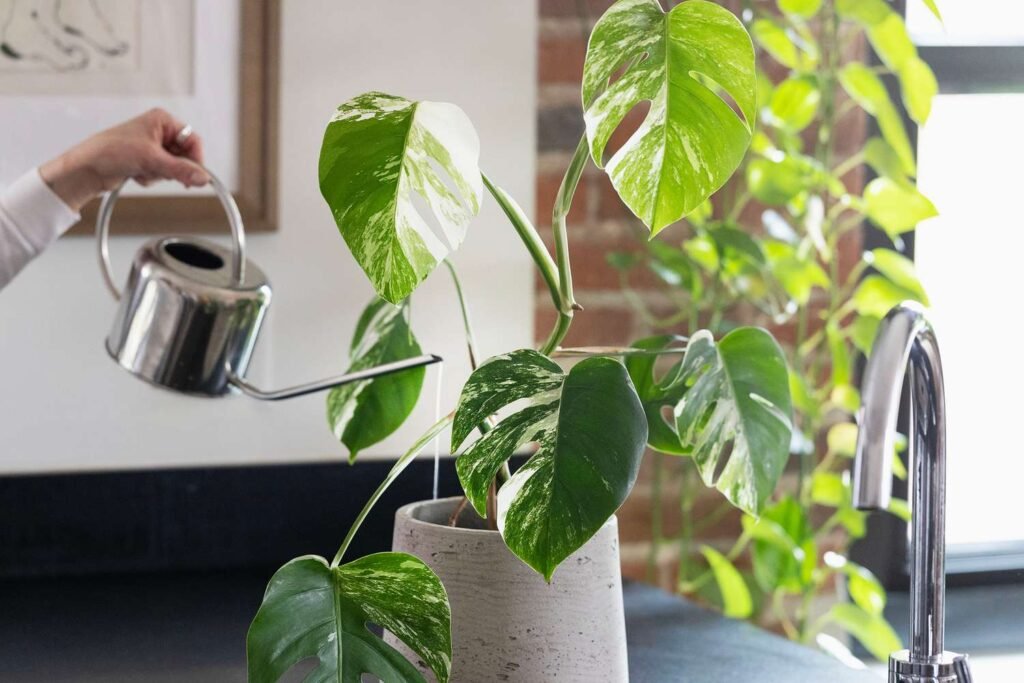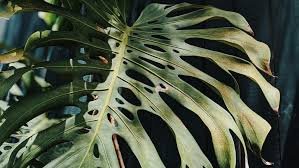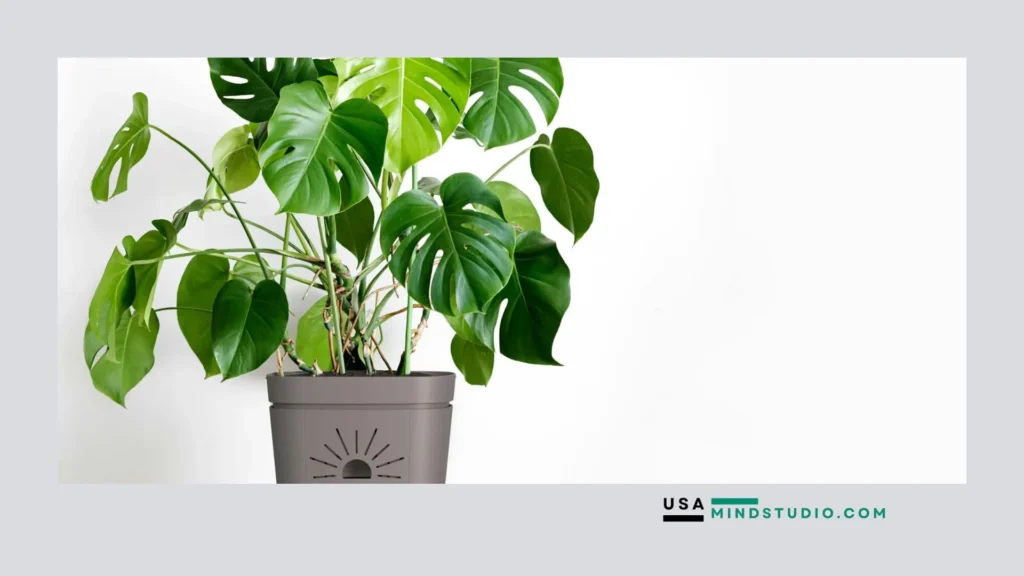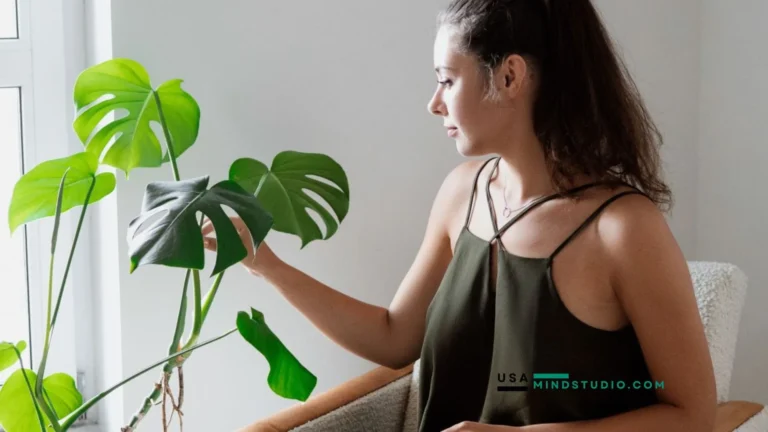Is your beloved Monstera plant showing signs of distress with yellowing leaves? Don’t worry – you’re not alone in this common plant parent predicament. Yellow leaves on your Monstera deliciosa can be caused by several factors, from improper watering to environmental stress. Understanding these causes is the first step toward nursing your plant back to health. In this comprehensive guide, we’ll explore the 7 most common reasons why Monstera leaves turn yellow and provide expert-backed solutions to revive your plant.
Key Takeaways:
- Yellowing leaves in Monstera deliciosa are often caused by improper watering patterns, with both overwatering and underwatering being common culprits.
- Light exposure plays a vital role – while Monstera plants need bright, indirect sunlight, too much direct sunlight can cause leaf yellowing and burn.
- Environmental factors such as improper humidity levels, temperature fluctuations, and poor soil conditions can stress your plant and lead to yellow leaves.
- Root rot, often resulting from overwatering or poor drainage, is a serious condition that can cause yellowing leaves and requires immediate attention.
- Nutrient deficiencies, particularly in older plants or those needing repotting, can manifest as yellowing leaves, especially in lower leaves.

Common Signs of Yellowing in Monstera Leaves
When your Monstera starts showing yellow leaves, it’s crucial to identify the specific patterns and characteristics of the discoloration. Understanding these signs helps pinpoint the underlying cause and implement the right solution.
Uniform Yellowing
Uniform yellowing across the entire leaf often indicates a nutrient deficiency or natural aging. If older leaves turn completely yellow while new growth remains green, this is typically part of the plant’s normal lifecycle. However, if multiple leaves yellow simultaneously, your plant might be lacking essential nutrients.
Pattern-Based Yellowing
Yellow spots or patches appearing in specific patterns can signal different issues. Scattered yellow spots might indicate pest damage, while yellowing between leaf veins (chlorosis) often points to iron deficiency. When leaves develop yellow edges with green centers, this usually suggests improper watering habits.
Progressive Yellowing
Watch how the yellowing progresses. If it starts from the leaf tips and moves inward, this could indicate overwatering or root problems. When yellowing begins at the base of the leaf and spreads outward, it might be due to underwatering or light exposure issues.
Additional Physical Changes
Yellowing leaves often come with other symptoms. Crispy or brown edges alongside yellowing suggest humidity problems or heat stress. If the yellowing leaves feel soft and mushy, this typically indicates overwatering or root rot. Curling or drooping yellow leaves might point to temperature stress or improper light conditions.
💡 Key Takeaway: Identifying the specific pattern and progression of yellowing in Monstera leaves is essential for accurate diagnosis and treatment, with different patterns indicating various underlying issues from nutrient deficiencies to watering problems.

Watering Issues and Solutions
When it comes to Monstera plants, maintaining proper watering habits is crucial for their health. Both overwatering and underwatering can lead to yellow leaves, but the symptoms and solutions differ significantly.
Signs of Overwatering
Overwatering is one of the most common causes of yellowing Monstera leaves. If you notice your plant’s leaves turning yellow and feeling soft or mushy, accompanied by brown spots, it’s likely suffering from too much water. The soil might feel constantly wet, and you may detect an unpleasant, musty odor – a tell-tale sign of root rot.
To fix overwatering:
– Allow the soil to dry out between waterings
– Check the drainage holes aren’t blocked
– Consider repotting if the soil remains waterlogged
– Trim affected roots if root rot is present
– Use well-draining potting mix
Signs of Underwatering
Underwatering presents different symptoms in Monstera plants. The leaves will turn yellow starting from the edges, feel crispy, and may develop brown tips. The soil will be completely dry, and you might notice the plant’s leaves drooping or curling.
To address underwatering:
– Water thoroughly until water flows from drainage holes
– Create a consistent watering schedule
– Check soil moisture with your finger or moisture meter
– Increase humidity around the plant
– Consider using self-watering systems for consistent moisture
The key to proper watering is finding the right balance. Always check the top 2-3 inches of soil before watering – if it’s dry, it’s time to water. During growing season (spring and summer), water more frequently than in winter when the plant’s growth naturally slows down.
💡 Key Takeaway: Proper watering is essential for Monstera health – check soil moisture regularly, ensure good drainage, and adjust watering frequency based on season to prevent both over and underwatering issues.

Light Exposure Problems
Monstera plants are quite particular about their lighting needs, and improper light exposure can lead to yellowing leaves. Understanding the right balance is crucial for maintaining your plant’s health and vibrant appearance.
Signs of Too Much Direct Sunlight
When Monstera leaves receive excessive direct sunlight, they often develop yellow patches or bleached areas. The intense rays can scorch the leaves, causing them to lose their rich green color. You might notice the yellowing starting from the edges and moving inward, accompanied by crispy brown spots.
Effects of Insufficient Light
On the flip side, too little light can also trigger yellowing. When your Monstera doesn’t receive enough light, the older leaves typically turn yellow first as the plant redirects nutrients to newer growth. You might also notice slower growth and smaller leaves with less fenestration (holes).
Finding the Perfect Light Balance
The ideal spot for your Monstera is in bright, indirect light. Place it near an east or north-facing window, or a few feet away from a south or west-facing window. If you can see a clear shadow with soft, blurry edges when you hold your hand between the plant and the light source, that’s usually perfect.
Adjusting Light Exposure
If you notice yellowing leaves, gradually adjust your plant’s position. Use sheer curtains to filter harsh direct sunlight, or move the plant closer to a light source if it’s not getting enough. Remember that sudden changes in light exposure can stress your plant, so make transitions gradually over a few days.
💡 Key Takeaway: Proper light exposure is vital for Monstera health – aim for bright, indirect light and avoid both direct sun and deep shade to prevent yellowing leaves and maintain optimal growth.

Environmental Stress Factors
Temperature Fluctuations
Monstera plants thrive in stable, warm environments that mirror their tropical origins. When exposed to sudden temperature changes or consistently cold conditions below 60°F (15°C), they respond by turning their leaves yellow. This is particularly common near drafty windows during winter or when placed directly under air conditioning vents.
To protect your Monstera from temperature stress, maintain a consistent environment between 65-85°F (18-29°C). Move your plant away from cold drafts and heating vents that can create temperature extremes. During winter, consider using a thermometer near your plant to monitor local temperature variations.
Humidity Concerns
As tropical plants, Monsteras require moderate to high humidity levels to maintain their lush, green appearance. Low humidity causes moisture loss through the leaves, leading to yellowing and crispy edges. This is especially problematic during winter months when indoor heating systems dry out the air.
You can increase humidity around your Monstera by:
– Using a humidity tray filled with pebbles and water
– Running a humidifier nearby
– Grouping plants together to create a microclimate
– Misting the leaves regularly (though this provides only temporary relief)
Aim to maintain humidity levels between 50-60% for optimal growth. Consider purchasing a hygrometer to monitor moisture levels in the air and adjust your humidity-boosting methods accordingly.
💡 Key Takeaway: Protect your Monstera from environmental stress by maintaining consistent temperatures between 65-85°F and humidity levels of 50-60%, while keeping it away from drafts and dry air sources.
Nutrient Deficiencies
Nutrient deficiencies can cause your Monstera’s leaves to turn yellow, a condition known as chlorosis. When your plant lacks essential minerals, it struggles to produce chlorophyll, the pigment that gives leaves their vibrant green color.
Common Nutrient Deficiencies
– Iron deficiency often shows up as yellowing between leaf veins while the veins remain green
– Nitrogen shortage causes older leaves to yellow uniformly, starting from the bottom
– Magnesium deficiency appears as yellowing from the leaf edges inward
– Zinc deficiency results in smaller leaves with yellow patches between veins
Identifying the Problem
Look closely at your Monstera’s yellowing pattern. If newer leaves are affected first, you’re likely dealing with an iron deficiency. For nitrogen deficiency, older leaves turn yellow first as the plant redirects nutrients to support new growth.
Solutions and Prevention
Regular fertilization with a balanced, water-soluble fertilizer during the growing season can prevent most nutrient deficiencies. Apply fertilizer every 4-6 weeks from spring through summer, reducing frequency in fall and winter.
For immediate treatment, use a specialized plant fertilizer containing micronutrients. Ensure your soil pH stays between 5.5-7.0, as extreme pH levels can lock out nutrient availability even when nutrients are present.
💡 Key Takeaway: Regular fertilization with a balanced nutrient solution and proper pH management can prevent and correct yellowing leaves caused by nutrient deficiencies in Monstera plants.
Root Health Issues
Root health is crucial for your Monstera’s overall well-being. When the roots aren’t functioning properly, it can lead to yellowing leaves and other visible signs of distress. Let’s explore how root-related problems can affect your plant and what you can do about them.
Root Rot
Root rot is a serious condition that occurs when roots sit in waterlogged soil for too long. The excess moisture creates an ideal environment for harmful fungi to thrive, causing the roots to decay. When you notice multiple leaves turning yellow simultaneously, especially from the bottom up, it’s often a sign of root rot.
To check for root rot, gently remove your plant from its pot. Healthy roots should be firm and white or light tan in color. If you find dark brown or black mushy roots with an unpleasant odor, your plant is suffering from root rot.
Root-Bound Conditions
When a Monstera outgrows its container, the roots become tightly packed and start circling around themselves. This restricted root system struggles to absorb water and nutrients effectively, leading to yellowing leaves. If you notice roots growing through drainage holes or your plant drying out quickly after watering, it’s likely root-bound.
Prevention and Treatment
For root rot, trim away affected roots using clean, sharp scissors and repot in fresh, well-draining soil. Ensure your pot has adequate drainage holes and adjust your watering schedule. Water only when the top 2-3 inches of soil feels dry.
If your plant is root-bound, repot it into a container 2-3 inches larger than the current one. Gently loosen the root ball before replanting to encourage outward growth. Use a high-quality potting mix that provides good aeration and drainage.
💡 Key Takeaway: Healthy roots are essential for a thriving Monstera – monitor for signs of root rot and root-bound conditions, and take prompt action through proper repotting and watering adjustments when issues arise.
Age and Growth-Related Yellowing
Just like humans, Monstera leaves go through natural aging processes. As your plant matures, it’s perfectly normal for older leaves, especially those at the bottom of the plant, to gradually turn yellow and eventually fall off.
Natural Leaf Lifecycle
This yellowing process is part of your plant’s growth strategy. Your Monstera redirects nutrients from older leaves to support new growth, causing the older foliage to yellow and drop. Think of it as your plant’s way of making room for fresh, vibrant leaves.
When to Be Concerned
While some yellowing is natural, excessive yellowing might indicate underlying issues. If you notice multiple leaves turning yellow simultaneously or younger leaves showing discoloration, it’s time to investigate other potential causes like improper watering or nutrient deficiencies.
Managing Natural Yellowing
You can gently remove yellowed leaves once they’re completely yellow to maintain your plant’s appearance. Use clean, sharp scissors to cut the leaf stem close to the main plant. This helps prevent energy waste and keeps your Monstera looking fresh and healthy.
💡 Key Takeaway: Natural yellowing of older Monstera leaves is a normal part of growth, but excessive yellowing may signal other issues requiring attention. Regular monitoring helps distinguish between natural aging and potential problems.
Conclusion
As we’ve explored, yellowing leaves on your Monstera don’t have to spell disaster for your beloved tropical plant. By identifying the root cause – whether it’s improper watering, lighting issues, or nutrient deficiencies – you can take targeted action to restore your plant’s health and prevent future problems. Remember to maintain consistent care routines, checking soil moisture regularly, providing appropriate indirect sunlight, and ensuring proper humidity levels. Pay special attention to your Monstera’s growing conditions during seasonal changes, particularly in winter months. While an occasional yellow leaf is normal, persistent yellowing requires prompt attention using the solutions we’ve discussed. With these expert tips and preventive measures in place, you can help your Monstera deliciosa thrive and maintain its stunning, split-edged leaves that make it the star of any plant lover’s collection. Start implementing these care strategies today, and watch your Swiss cheese plant transform back into the vibrant, healthy specimen it’s meant to be.
FAQs
Can yellow Monstera leaves turn green again?
No, once a Monstera leaf turns yellow, it cannot revert to green. The yellowing process is irreversible as it indicates cell death. However, you can prevent other leaves from yellowing by addressing the underlying cause and providing proper care.
How often should I fertilize my Monstera to prevent yellowing?
Feed your Monstera with a balanced, water-soluble fertilizer every 4-6 weeks during the growing season (spring and summer). Reduce fertilization to once every 2-3 months during winter months to prevent nutrient buildup and yellowing.
Is it normal for older Monstera leaves to turn yellow and fall off?
Yes, it’s natural for older, lower leaves to yellow and drop as part of the plant’s normal aging process. This is especially common during the growing season when the plant focuses energy on new growth. Don’t worry unless multiple leaves yellow simultaneously.
What’s the ideal humidity level for preventing yellow leaves on Monstera?
Maintain humidity levels between 60-80% for optimal Monstera health. Use a humidity tray, group plants together, or run a humidifier to achieve this range. Low humidity below 40% can stress the plant and cause yellowing.
How do I know if my Monstera’s yellow leaves are caused by overwatering or underwatering?
Check the soil moisture and leaf texture. Overwatered leaves feel soft and mushy with dark brown spots, while underwatered leaves become crispy and yellow around the edges first. The soil should be halfway dry between waterings.
Should I cut off yellow Monstera leaves immediately?
Wait until the leaf is completely yellow before removing it. Partially yellow leaves can still photosynthesize through their green portions. Use clean, sharp scissors to cut the leaf at the base of its stem to prevent disease transmission.

